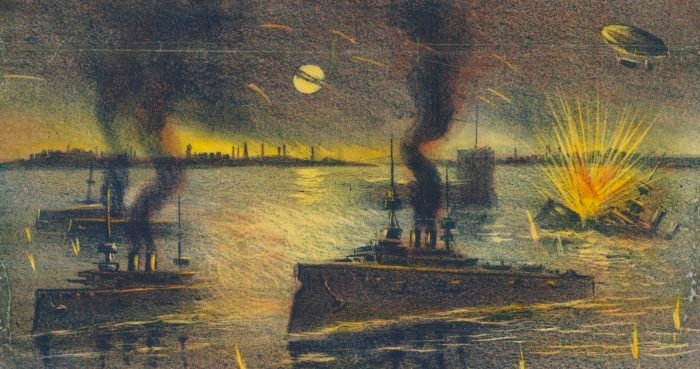The previous post in this series was supposed to be the last. But in the course of taking two months to write it, I managed to forget about another, earlier association between a White Australia and an Australian airship. This one wasn't a real airship; it was a fictional one which appeared in Randolph Bedford's 1909 play, White Australia; or the Empty North -- effectively an Australian version of Guy du Maurier's An Englishman's Home. Does this shed any light on Alban Roberts' 1914 airship, White Australia?
...continue reading
Ephemera
The story behind the terror behind Keep Calm And Carry On
Earlier this week I had my first article published in The Conversation, on the actual original context for the Keep Calm And Carry On poster, as opposed to the assumed original context. The Conversation is a great platform for academics to get their work and ideas out to the public, and to provide expert analysis of what is happening in the world. It's largely funded by universities and only academics, researchers or PhD students can write for it; it has a slick writing and reading interface and even actual editors who will commission articles and actively work with authors to improve them, particularly in terms of accessibility to a general audience. (There's no payment for writing, but academics are used to that.) The Conversation started out in Australia, but it has since branched out to the UK, the US, France and Africa. Here in Australia, at least, it feeds into other forms of media: everything is Creative Commons licensed, to encourage wide republication on other news sites, and three radio stations lined up interviews: I spoke to Genevieve Jacobs on 666 ABC Canberra on Wednesday (for a few days, you should be able to listen on the replay at about 1:28:44), Ali Clarke on 891 ABC Adelaide (ditto at about 37:07), and I will be speaking to Sean Britten on 2SER (Sydney) next Wednesday.
I won't go into any detail about the article itself, in part because it's a reworking of a post I wrote here at Airminded earlier this year. But I will post a bigger version of a graphic I stitched together to show Keep Calm alongside the other two posters designed by the Ministry of Information at the same time, and (unlike Keep Calm) actually displayed to the public on a large scale. It was inspired by a similar comparison which for some reason had green and blue posters as well as red. I couldn't find unambiguous evidence that these colours were used, whereas red definitely was, so I put together this version which might be of use to somebody.
The Conversation is not your usual media website, so if you're an academic and you've got something to say, why not pitch an idea?
Preparing for take-off
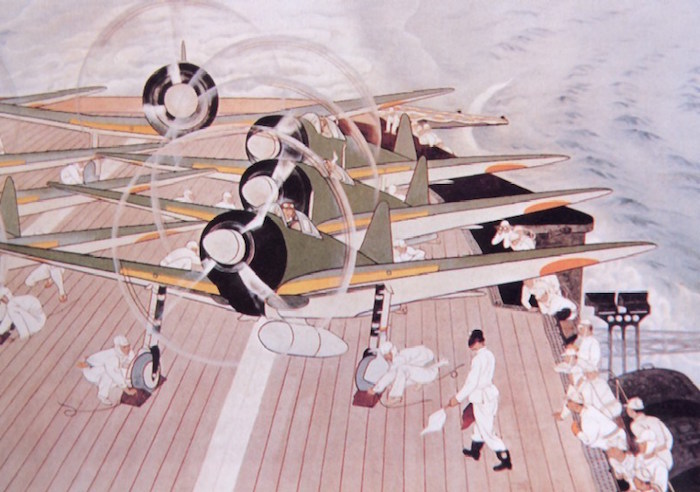
Apropos of nothing, here's a (somewhat cropped) c. 1943 painting by a Japanese artist named Shori Arai. (Sometimes called Maintenance Work aboard Aircraft Carrier II, though clearly it's not maintenance that's going on there.) The original is held by the National Museum of Modern Art, Tokyo. It was also issued as a postcard by the Japanese Navy Ministry.
...continue reading
1939 vs. 1940

The Guardian has published a very interesting piece by Owen Hatherley on the 'Keep Calm and Carry On' phenomenon, an extract from his new book, The Ministry of Nostalgia: Consuming Austerity. He persuasively locates the poster within the context of an 'austerity nostalgia [...] a yearning for the kind of public modernism that, rightly or wrongly, was seen to have characterised the period from the 1930s to the early 1970s; it could just as easily exemplify a more straightforwardly conservative longing for security and stability in hard times'. I'm not British, but from the outside this seems like a plausible explanation for the renewed interest in the Blitz spirit in recent times.
...continue reading
For what?
I found this pro-disarmament poster on eBay (at US$1985, I won't be buying it!) The text reads:
THE TRANSPORT OF THE FUTURE.
FOR WHAT?
DEATH AND DESTRUCTION
OR
FRIENDSHIP AND PEACE
Abolish All War Aeroplanes
This is the seller's own description:
An incredibly rare original vintage anti-war poster circa 1938 in fine condition, archivally mounted on acid-free paper and linen-backed. Measures 28 1/2 x 18 3/4 inches (63 x 48 cm). Fine condition or nearly so (A). Lightly toned, a few repaired closed short tears from edges (clearly shown in photos). A few minor instances of printer overpainting in the letters. Possible light stain or mild abrasion to image area. Generally in fine condition. Produced by the Friends' Peace Committee, Friends House, Euston Road, London NW1 and the Northern Friends' Peace Board, Spring Bank, Rawdon, Nr. Leeds, England, and printed by H.W. & V. Ltd., London.
I doubt that it's as late as 1938, as claimed by the seller. A biplane is a bit (though not completely) old-fashioned for 1938, for a start. Katherine Firth suggested that the font is more late 1920s/early 1930s. And the poster's message doesn't make much sense for 1938, when disarmament was no longer realistic. Not that pacifists are always realistic, by any means; but the connection that is drawn between civil and military aviation, between the possibilities of 'death and destruction' through 'war aeroplanes' and 'friendship and peace' through aerial 'transport of the future' is very suggestive of 1932-34, when the World Disarmament Conference debated and tried, unsuccessfully, to resolve precisely this nexus -- usually considered to be the commercial bomber. That said, these two groups (both affiliated with the Society of Friends, i.e. the Quakers) do seem to be separating out civil aviation from military aviation, arguing that a simple ban on military aircraft would save civilisation from destruction and allow it to benefit from air travel. It was more perhaps usual to argue that the internationalisation of civil aviation in some form was required in order to prevent airliners from being turned into bombers, with a further step being the internationalisation of military aviation as well. I can't find any reference to this poster in BNA but a quick search does confirm that the Friends' Peace Committee and the Northern Friends' Peace Board were fairly vocal in 1933-35, for example writing an open letter to the prime minister in 1933 warning against starting aerial rearmament while the Geneva conference was still in the balance, and in 1935 deploring the inevitability of attacks upon civilians implicit in the initiation of air raid precautions.1 The poster is at least evidence that they tried to persuade the public (or some sector of the public) of the aerial danger too.
The fine print

FREE
TRIP
TO
EUROPE;
INVITATIONS
ISSUED
TO-DAY
or
ALL ELIGIBLE MEN Will be Given FREE CLOTHING, FOOD, MONEY, STEAMER AND TRAIN ACCOMMODATION, AND A TRIP FULL OF ADVENTURE AND INTEREST, FORMING THE GREATEST EVENT OF THEIR LIVES, TO DO THEIR DUTY AT THE PLACE WHERE EVERY FIT AUSTRALIAN SHOULD BE -- STANDING SHOULDER TO SHOULDER WITH HIS PRESENT DEFENDERS IN EUROPE; INVITATIONS (IN THEMSELVES DIPLOMAS OF HONOUR FOR EVER) WILL BE ISSUED AND COMRADESHIP ESTABLISHED TO-DAY ON APPLICATION TO ANY RECRUITING OFFICER.
Source: Imperial War Museum.
The commercial bombers of Zion — I
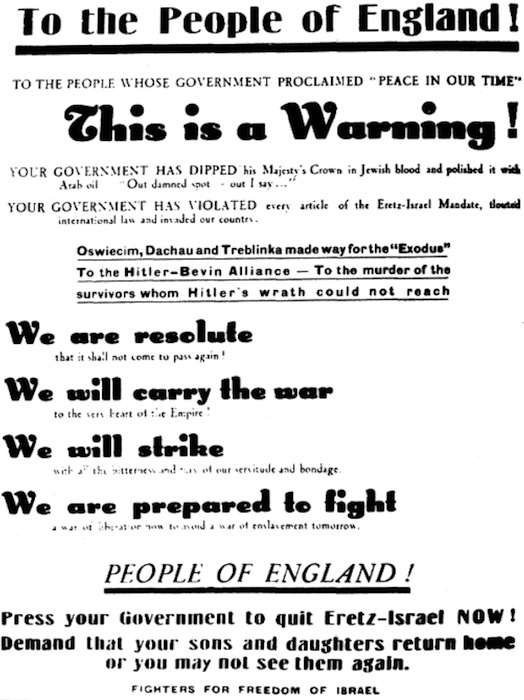
Or, that time the Stern Gang tried to bomb London from the air.
In early September 1947, the Parisian police arrested ten people connected with the Stern Gang, nine of them Jews including Baruch Korff, an American rabbi who was head of the Political Action Committee for Palestine.1 Press reports claimed that the group's aim was 'to carry out reprisals for the return to Europe of the 4,500 intending emigrants on board the President Warfield'.2 The President Warfield is better known today as the Exodus, which in July had attempted to land Jewish refugees from Europe in what was still the British Mandate of Palestine, only to be forcibly and bloodily intercepted by the Royal Navy. By the time of the arrests in Paris the refugees were about to land in Hamburg, there to be (again, as it turned out, forcibly and bloodily) interned in displaced persons camps. Korff was outraged at all this, and seems to have been drawn to spectacular, and aerial, forms of protest and resistance: earlier in 1947 he had made the news with his plan to subvert British immigration controls in an 'Exodus by Air', which involved landing refugees at secret Palestinian airfields, or even parachuting them in.3 ...continue reading
The road to war — III
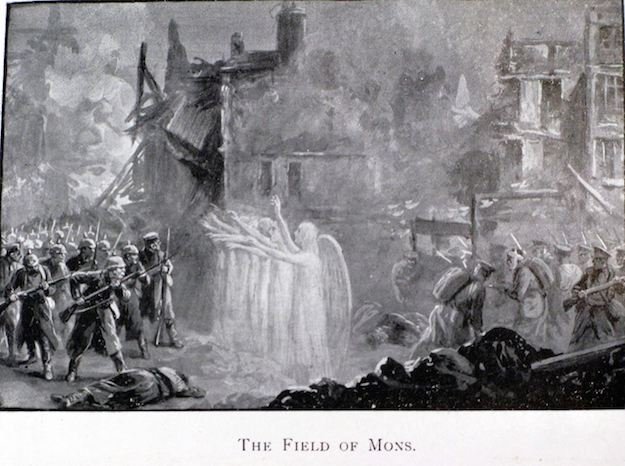
My third contribution to ABC New England's 'The road to war' series is now online. Today I looked at the events of 20-26 August 1914, focusing particularly on events in Belgium: the march of the German 1st Army through Brussels, 320,000-strong; more German atrocities against civilians, as well as the burning of the library at Louvain; the exploits of L. E. O. Charlton and V. H. Needham of the Royal Flying Corps; and (the ostensible topic for today) the British Expeditionary Force's first major encounter with the German army in the battle of Mons. I also discussed the Angel of Mons, which then led to a digression into the 'Russians with snow on their boots' legend as well as rumours of secret Zeppelin bases in Britain. I then briefly discussed the outcome of the battle of Lorraine, in which Ferdinand Foch first distinguished himself, as well as noting Russian engagements with both Austro-Hungarian and German forces, including the start of the battle of Tannenberg. Finally I talked about the massive losses being incurred by all armies but by France in particular: 27,000 French soldiers were killed on 22 August 1914, which apparently is the highest number of deaths for any army for a single day in this war.
Image source: Yahoo! News.
The road to war — I
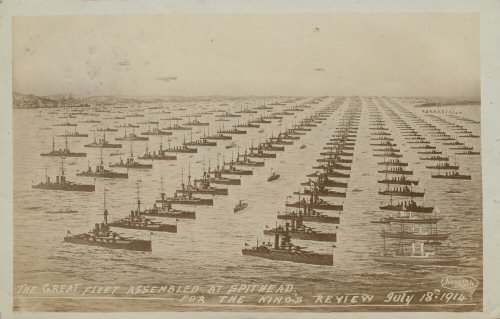
Today I had my very first radio appearance, on ABC New England North West, talking to Kelly Fuller on the Mornings show. I was talking about what was happening in Europe 100 years ago, during the July Crisis of 1914. More specifically, I spoke about the Royal Navy's test mobilisation at Spithead (above) and the drafting of the Austro-Hungarian ultimatum to Serbia in response to the assassination of Franz Ferdinand. Despite a throat infection and a couple of stumbles, and going under time, I think it went alright. You can listen to it here.
This is my first contribution to a weekly radio series, 'The Road to War', where historians from the University of New England (mostly) and Flinders University will discuss the events of 1914 and then 1915, a century after they happened. The idea, at least at this stage, is that we will highlight what was happening in the First World War (and the lead up to it) before Gallipoli, which is essentially when Australian memory of the war begins -- even though there was actually a lot going on before then. So something like the post-blogging I've done from time to time, but less time-intensive. Particularly since I'm just one member of a team: the others are my colleagues Richard Scully (whose idea all of this was), Nathan Wise, Erin Ihde (all from UNE), and hopefully Melanie Oppenheimer (Flinders). Richard has already given a couple of talks, on the assassination itself and the German blank cheque, and Nathan spoke last week about Europe going on its summer holidays while Austria-Hungary decided what to do; next week Erin will look at the Serbian response to the ultimatum and the firing of the first shots. Future episodes will be available from here or here. My contributions will mainly focus on the war in the air (naturally -- I even managed to sneak the RNAS in today) and at sea, but I'll be covering some aspects of the land war, too. It should be fun and educational -- maybe even at the same time!
Image source: the-weatherings.co.uk.
Judging a book by its cover
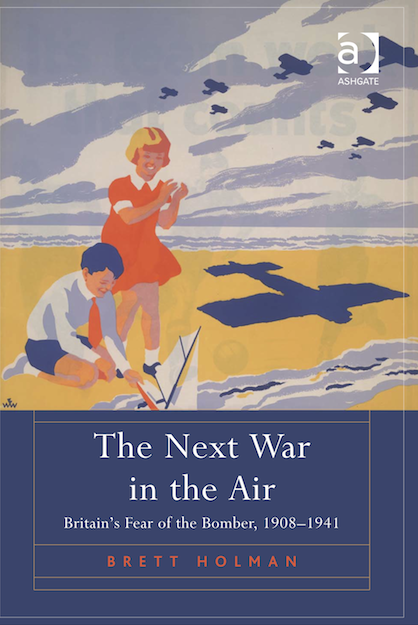
My book, The Next War in the Air: Britain's Fear of the Bomber, 1908-1941, is getting closer to being real. In June, in just three months, it will be in the bookstores. Soon the indexing will be undertaken. Yesterday I made the final corrections to the text, and shortly I'll receive the page proofs from Ashgate, for last-minute error checking. And it has a draft cover design! Which I must say I am rather pleased with.
...continue reading

